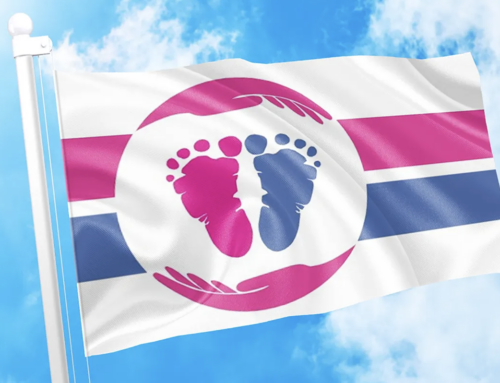A recent study, You’ve Got a Friend: A Review of Advocacy in Ontario are “vulnerable” in the sense that they are often dependent on others and therefore susceptible to abuse, neglect and abandonment. The report is the work of Father Sean O’Sullivan, a Roman Catholic priest and former Progressive Conservative MP, and it was undertaken at the request of the Liberal provincial government.
Investigations over the past year have shown that there is an urgent need for “advocates” who will work to protect vulnerable adults: the frail elderly, the physically handicapped, the psychiatrically disabled, and the developmentally handicapped.
It is true that there are advocacy services, many of which are excellent and run by volunteers, but there are wide gaps which produce inequalities and discrimination. Some adults are well cared for, but others – equally needy – are neglected and/or abused. Those who live in smaller communities are often without access to care.
It was noted that institutionalization increases vulnerability; there are no uniform standards of service or training programmes; there is a chronic lack of resources, and often a limited accountability. Thus, the report concludes, there is a clear need for a co-ordinated and effective advocacy system in Ontario.
Amongst the findings reported in the study are the following:
– “Alarming numbers” of vulnerable adults are abandoned by family and friends in long-term care facilities, and also in the community.
– Over 5,000 developmentally handicapped are in provincial institutions, most of them during their entire lives without the benefit of any advocacy. There is no one to speak for them
– Frail and elderly people are exploited by friends, family strangers and tradesmen in their own homes and in private and public care facilities.
– The federal government’s estimate is that between two and four per cent of senior citizens are victims of “elder abuse.”
– A 1980 Study for the Government of Manitoba Council on Aging estimated that 2.2 percent of 18,000 elderly receiving care were suffering abuse: physical, financial and/or emotional.
– It was estimated that in 1986 there were 12,000 homeless former psychiatric patients.
The report states that it was “startling” to discover that, “apart from amendments to nursing-home legislation enacted this year requiring the reporting of instances of abuse or neglect of residents, there is no similar protective legislation in Ontario for the elderly living in other institutions or in the community nor for other vulnerable adults.” Children are protected by law, and there is legal protection for animals, but there is no legal protection for disabled, frail elderly or other vulnerable adults in Ontario. Other jurisdictions do provide protection for adults who are at risk. In Nova Scotia the law makes it mandatory for every person who is aware of abuse to a vulnerable adult, to report the information, “whether or not it is confidential or privileged, to the Minister of Social Services.”
The State of Minnesota makes it a misdemeanour offence to fail to report suspected abuse or neglect of vulnerable adults “immediately by telephone or otherwise” and later by a written report. The law adds teeth to this injunction by making the person who fails to report statutorily liable for a civil suit for any damages caused by the failure to report.
The actual numbers of vulnerable adults in Ontario and their percentage of the total provincial population highlight the need for a new co-ordinated and effective advocacy system in Ontario.
According to Statistics Canada almost one million people in Ontario in 1984 (937,000 to be exact) were physically disabled in degrees varying from mild to severe. They comprised 13.6 percent of Ontario’s adult population. However, in the population over 65 years old, the percentage rose to 38.4 percent, as opposed to four percent in the 15-24 year old group.
Meantime the age balance of Ontario people has altered radically. In 1960 the percentage of seniors aged 65 and over was eight percent. In 1987 there are 1,000,000 seniors, making up 11 percent of the population, and this proportion is expected to increase so that by 2030 some 23 percent of the people will be over 65 years old.
Not all the elderly are frail, and indeed most are hale and active. However, statistics show that in 1985 some 7.3 percent of the elderly were in nursing homes or in homes for the elderly.
In addition to the above there are 78,000 developmentally handicapped adults, plus the psychiatrically disabled.
The report dealt with other aspects of vulnerability, amongst them problems of communication. Some adults have problems with speech or hearing, and many lack the ability to speak either English or French. Today in Ontario 20 percent of senior citizens have a mother tongue other than English or French, and of this group one in five (or 40,000) are not able to converse in either official language. Such elderly people may well be unaware of their rights or be afraid to exercise them.
The report suggests a number of routes by which the provincial government can develop a fairer and more equitable system of social advocacy across Ontario, but it openly prefers one called Shared Advocacy.
This method would involve the establishment of a Commission and a central office, followed by Regional Boards and later by local community groups. There is a special emphasis on volunteer advocacy.
It is worth noting that amongst the closing sentences of the report Rather Sean O’Sullivan wrote: “The training of such volunteer advocates is consistent with our belief that advocacy is not just a function of government: it is part of our responsibility to care for one another as family members, friends and concerned citizens.”
It is the aim of Father O’Sullivan ‘s report to push a concerned government into action so that every vulnerable adult will be able to hear “You’ve got a friend.”



